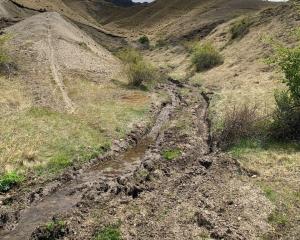
Speaking during the public forum at the full council meeting in Queenstown on April 26, Anna Jameson, of the Wakatipu Access Group, said she was "really excited" to be at the meeting when the policy was to be adopted, having lobbied for it for a decade.
"This is not about being a nice policy to tick boxes ... this is about our rights as citizens ... our rights to participate and contribute to this community [and] this is following the lead from other councils who have had strategies for a decade or so.
"It’s important that Queenstown actually measures up."
Ms Jameson, who uses a wheelchair, said about six years ago she was trying to access the swimming pool in Queenstown and struggled to get through the front doors to Alpine Aqualand.
She lobbied the council and made submissions "for a few years" before she spoke to management at the pool, who installed a doorbell.
"A doorbell so disabled people could wait outside on a chilly morning, ringing the doorbell, and someone would come and help us."
Despite that "it [the door] wasn’t even wheelchair accessible".
"I’m sharing that story because I think that disabled people need to be part of the community and we don’t want to struggle through stupid doors.
"We want to be in the pool doing our exercise, like you do.
"We want to be contributing and going to work; being able to find a car park.
"I have high hopes that this policy will be a living document and it will promote inclusion."
Until Tuesday, the council had adopted "best practice" around accessibility, but did not have a policy to guide decision-making for internal and external programmes.
Council community and events facilitator Marie Day’s report said the policy set goals and "measurable actions" to create an inclusive and enabling society by removing barriers to participation for disabled residents and visitors.
The living document would be reviewed every two years at which time progress updates would also be provided.
Eight goals were identified, including making public infrastructure and council facilities accessible.
The council planned to produce an online and hard copy disability access map, showing all accessible car parks, public toilets and public facilities in the district and review monitoring of building and resource consent standards relating to accessibility to ensure standards were being met.
It would also consider a process to provide temporary disability parking permits for those who experienced temporary impairments.
The council further intended to consider the accessibility of its existing community facilities, parks and reserves, ensure new facilities and services were accessible, and review monitoring of building and resource consent standards to ensure accessibility standards were being met.
The needs of disabled people in planning emergency response provisions also would be taken into account, with input from the disabled community.












